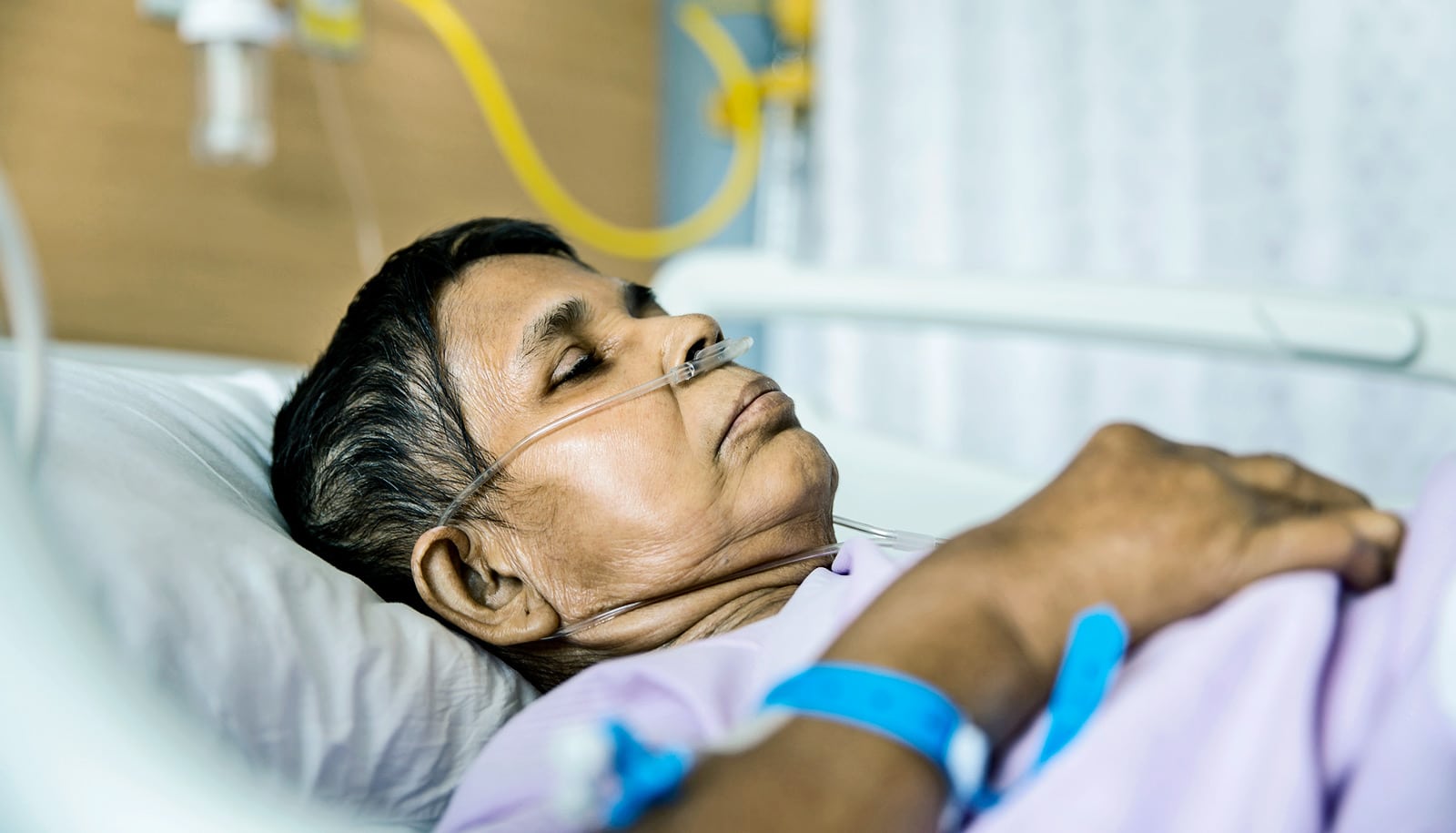Researchers have found that an existing treatment could help patients with a specific kind of chronic obstructive pulmonary disease (COPD).
“These patients already have been given every treatment we have to offer them and are still having flare-ups…”
In a new paper, researchers report that an antibody treatment reduced the rate of flare-ups by nearly 20 percent in patients with a subgroup of treatment-resistant COPD, according to the results of two large international trials presented today at the European Respiratory Society International Congress in Milan, Italy, and simultaneously published in the New England Journal of Medicine.
“The goal of precision medicine is to give the right treatment to the right patient,” says lead author Frank Sciurba, the director of the Center for COPD and Emphysema and University of Pittsburgh Medical Center’s Pulmonary Function Exercise Physiology Laboratory, and a visiting professor in the Division of Pulmonary, Allergy, and Critical Care Medicine at the university’s School of Medicine.
“These findings are the first example of a precision therapy that is uniquely effective in a subgroup of patients with treatment-resistant COPD.”
COPD, a progressive lung disease characterized by airway obstruction and chronic lung inflammation, affects 30 million Americans.
“There is significant variation between patients in the cells and other proteins responsible for lung inflammation, so there are actually many different subtypes of COPD,” says Sciurba.
One subgroup called eosinophilic predominant COPD is present in as many as 40 percent of patients and is characterized by elevated levels of a type of white blood cell known as eosinophils, he says.
The new study reports the results from two Phase III clinical trials evaluating the efficacy of mepolizumab, an antibody treatment that reduces the number of eosinophils in the blood, in moderate to severe treatment-resistant eosinophilic COPD by blocking the pro-inflammatory effects of interleukin-5.
Patients included in the trials were still having flare-ups despite a year of a standard treatment known as “triple inhaled therapy” that includes bronchodilators and glucocorticoids.
“These patients already have been given every treatment we have to offer them and are still having flare-ups that significantly interfere with their quality of life and can lead to deterioration in lung function and higher mortality,” says Sciurba. “We hoped to be able to offer them an option.”
Mepolizumab is already approved by the Food and Drug Administration (FDA) to reduce symptom flare-ups and improve quality of life in eosinophilic asthma.
The first trial, termed METREX, was conducted at 117 sites in 15 countries from 2014 to 2017. A total of 837 COPD patients were stratified by blood eosinophil counts and randomized to receive either 100 milligrams of mepolizumab or placebo, delivered under the skin every four weeks for one year.
The patients with high eosinophil counts who received mepolizumab had a statistically significant 18 percent lower rate of moderate/severe exacerbations (1.4 per year compared to 1.7 per year) than those in the placebo group. The exacerbation rate in the low eosinophil group treated with the biologic did not differ from placebo. The time to the first exacerbation also was higher with mepolizumab than placebo, but only in the high eosinophil group.
Oxygen doesn’t benefit everyone with COPD
In a second, simultaneous trial, termed METREO, the team assessed the effect of a higher dose of mepolizumab in 675 patients with elevated eosinophil levels. Patients were randomized to receive 100 or 300 milligrams of mepolizumab or placebo, with the same delivery method and schedule as METREX.
Similar to METREX, the exacerbation rate was reduced by 20 percent in the high eosinophil group after 100 milligrams of mepolizumab. The METREO results narrowly missed statistical significance. The 300-milligram dose did not provide an advantage over the lower dose.
An analysis of data from both trials found that as baseline blood eosinophil counts increased, so did mepolizumab’s reduction in the annual exacerbation rate. This finding indicates that patients with higher initial eosinophil counts benefited more from mepolizumab than those with lower eosinophil counts, Sciurba says. The safety profile of mepolizumab did not differ from placebo in either trial.
“In addition to providing a new treatment option for patients with treatment-resistant, moderate to severe COPD, the new results also are important because they identify a potential biomarker for the disease and demonstrate that eosinophilic inflammation plays a role in flare-ups in COPD,” Sciurba says.
“The findings in these trials exemplify what we hope to achieve not only in COPD but across all lung diseases with regards to a precision approach to treatment,” says division chief Rama Mallampall.
Adults with COPD may have higher anxiety risk
GlaxoSmithKline, which plans to seek approval from the FDA for the use of mepolizumab in eosinophilic COPD, provided funding for both trials.
Additional authors of the study are from the University of Oxford, UK; CIC Nord Aix-Marseille University, France; Temple University; University of Groningen, the Netherlands; Mainz University Hospital, Germany; Duke University; CHU UCL Namur, Belgium; Showa University, Japan; and GlaxoSmithKline.
Source: University of Pittsburgh



